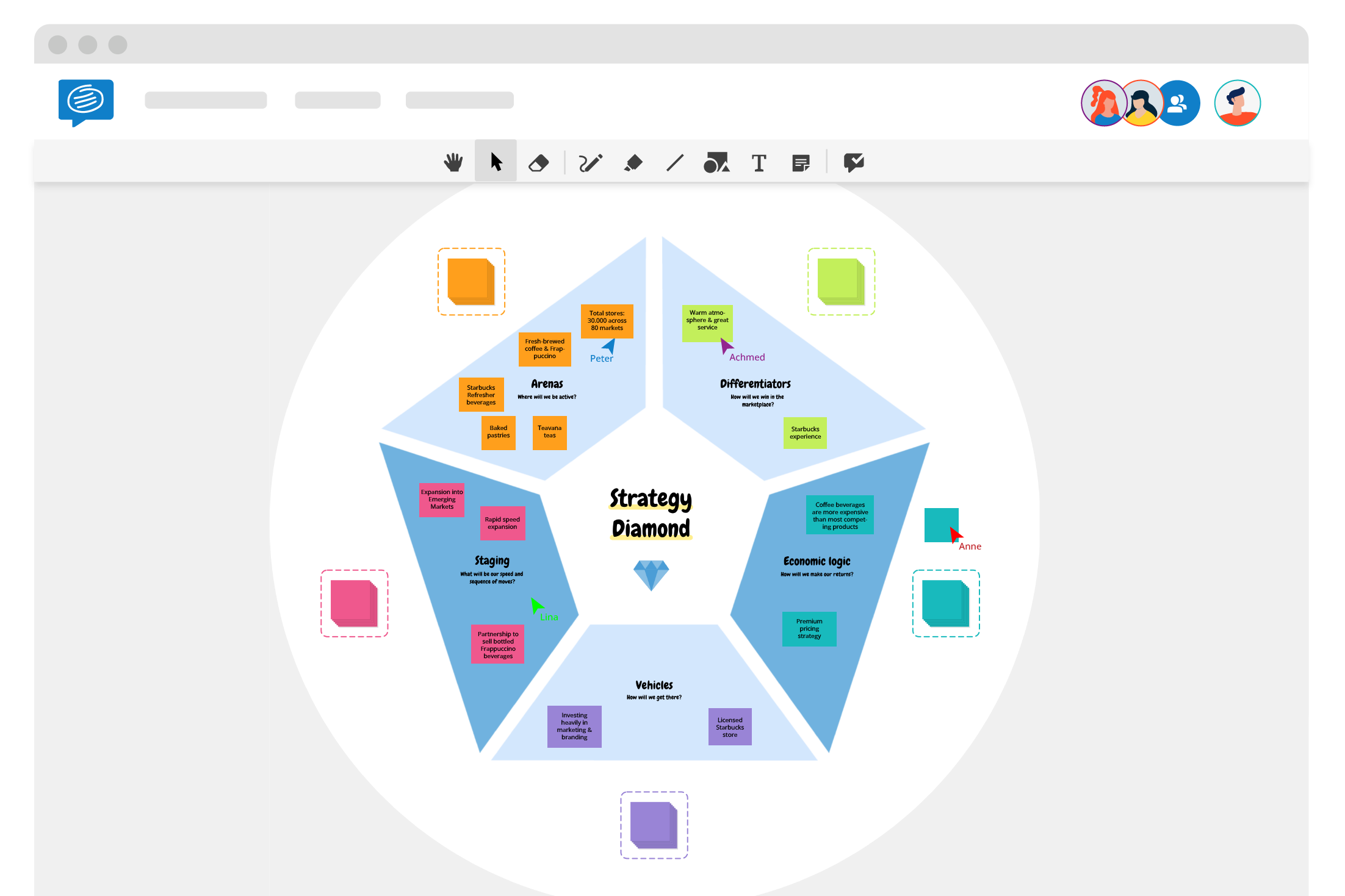Strategy Diamond model and its 5 sections explained with the Starbucks example
An effective business strategy is more than just being low-cost, or offering amazing customer service. While these are important elements of a strategy, they don't offer any real insight into how they'll be achieved. Therefore, to create a complete strategic plan that considers all aspects, we recommend utilizing the strategy diamond model.

An effective business strategy is more than just being low-cost, or offering amazing customer service. While these are important elements of a strategy, they don’t offer any real insight into how they’ll be achieved. Therefore, to create a complete strategic plan that considers all aspects, we recommend utilizing the strategy diamond model.
Let’s explore the model in greater depth.
What is the strategy diamond model?
The strategy diamond is a simple model for creating a business strategy outline. Created by management professors Donald Hambrick and James Fredrickson in 2001, the framework shows the way various factors interconnect to deliver profit. Its five sectors of macroeconomic competition are designed to be examined independently, but together form a cohesive plan. Importantly, a well thought out diamond can be the guide to how this success might be achieved in reality.
There are five important questions that need to be answers to ensure you have a complete strategic plan:
- Where will we be active? (Arenas)
- How will we get there? (Vehicles)
- How will we win in the marketplace? (Differentiators)
- What will be our speed and sequence of moves? (Staging)
- How will we make our returns? (Economic logic)
What are the 5 sections of the strategy diamond framework?
The five separate parts form a complete strategy.
Arenas
Arenas cover the areas that a company will target in order to be successful. These include:
- Product categories
- Market segments
- Channels
- Technologies
- Industries
Vehicles
Vehicles are the strategic ways you plan on getting there. These include:
- Joint ventures
- Partnerships
- Licensing/franchising
- Internal development
- Acquisitions
Differentiators
The Differentiators should include your unique selling points (USPs) or strategic advantages. These include:
- Branding and styling
- Price point
- Customization
- Speed to market
- Reliability
Staging
Staging (also referred to as Sequencing) plots out the order tasks will be completed. These include:
- Sequence of key events
- Speed of expansion
Economic Logic
Economic Logic focuses on the finances of the business, such as how you will make money, and what costs are involved. These include:
- Scalability
- Cost to produce
- Commercial models
- Price points
- Premium offerings such as service or unique features
Using a free template
We’ve created a free Strategy diamond template you can use with your team. Simply load the template, and invite your team to collaborate in real-time on the board.

Then, begin by working your way through each aspect, encouraging your team to add their thoughts onto digital Sticky Notes.
Once each section has been completed, take the time to discuss the most relevant and important ideas, and condense similar topics.
Once the template is completed, save it in your account to easily refer back to, or download it to share with stakeholders or management.
Strategy Diamond example: Starbucks
If you want to get a feel for what a completed Strategy diamond looks like, we’ve completed a model based on the coffee chain Starbucks.

We have a complete library of strategic assets that you can use to continue working on your business, such as Porter’s five forces, PESTEL analysis and the SWOT analysis. Or create your own business model with our business model canvas!

